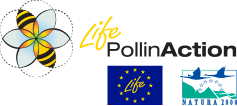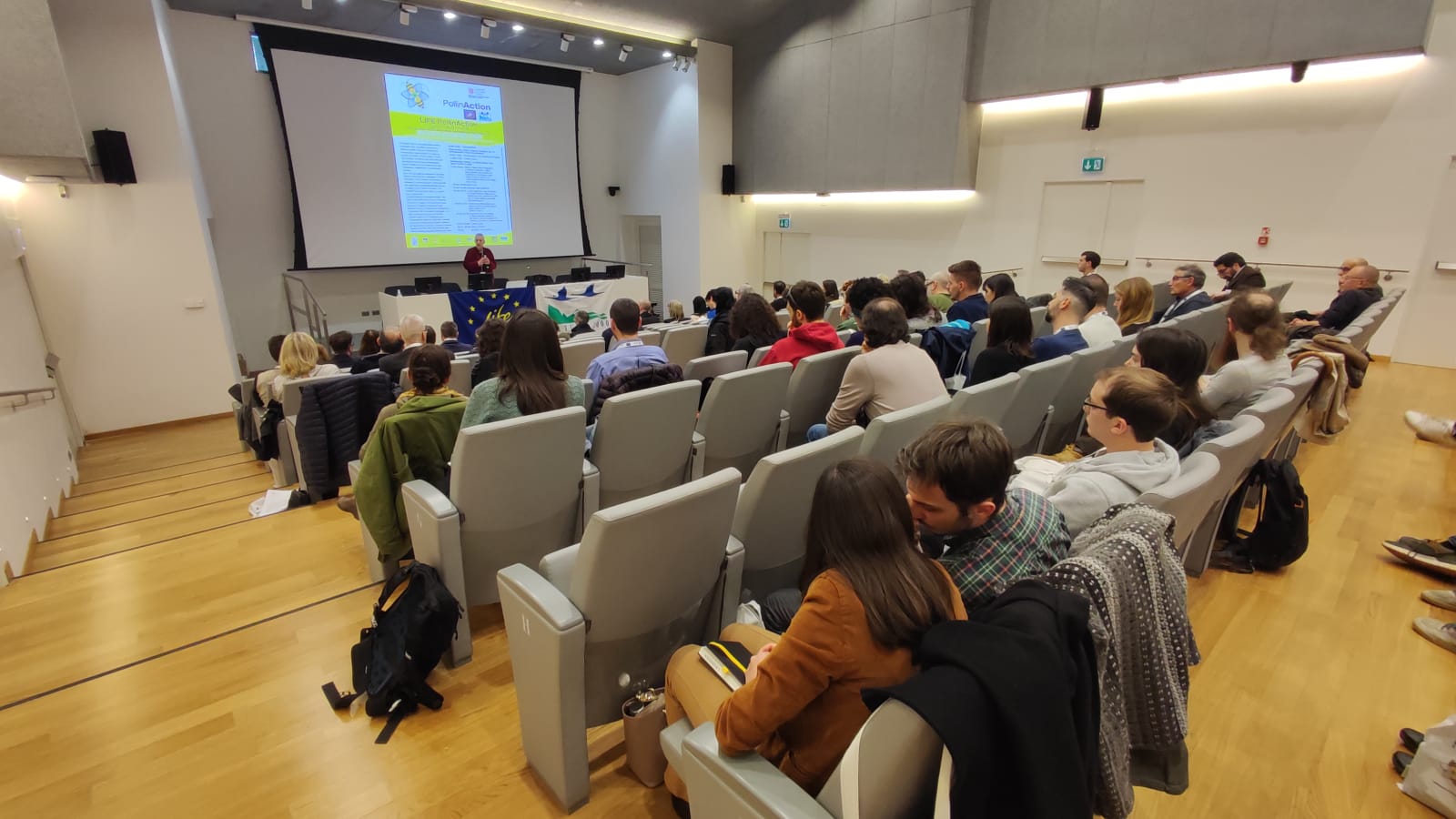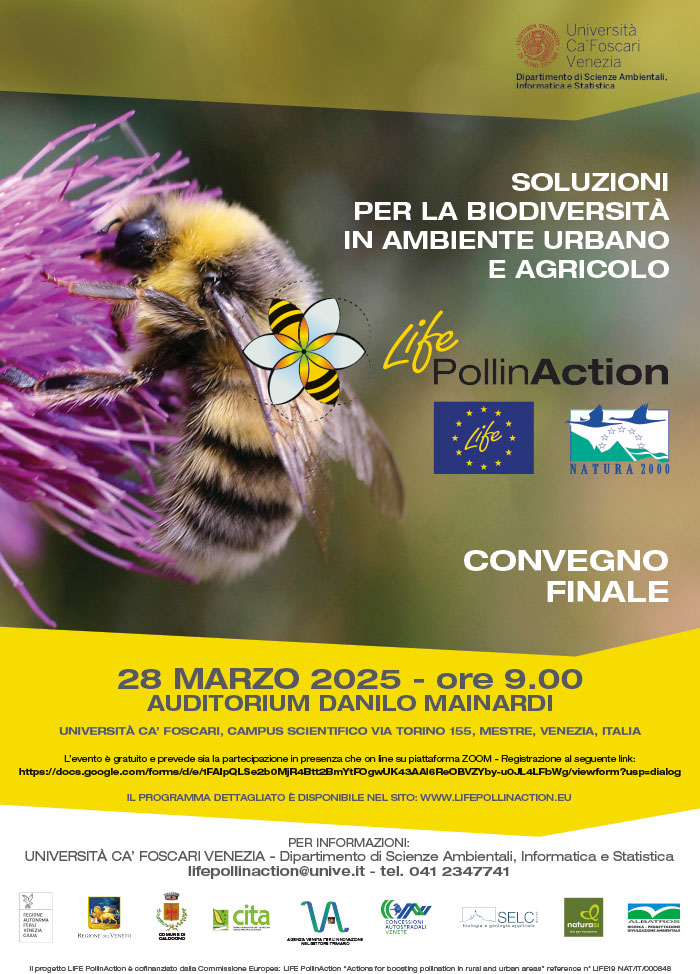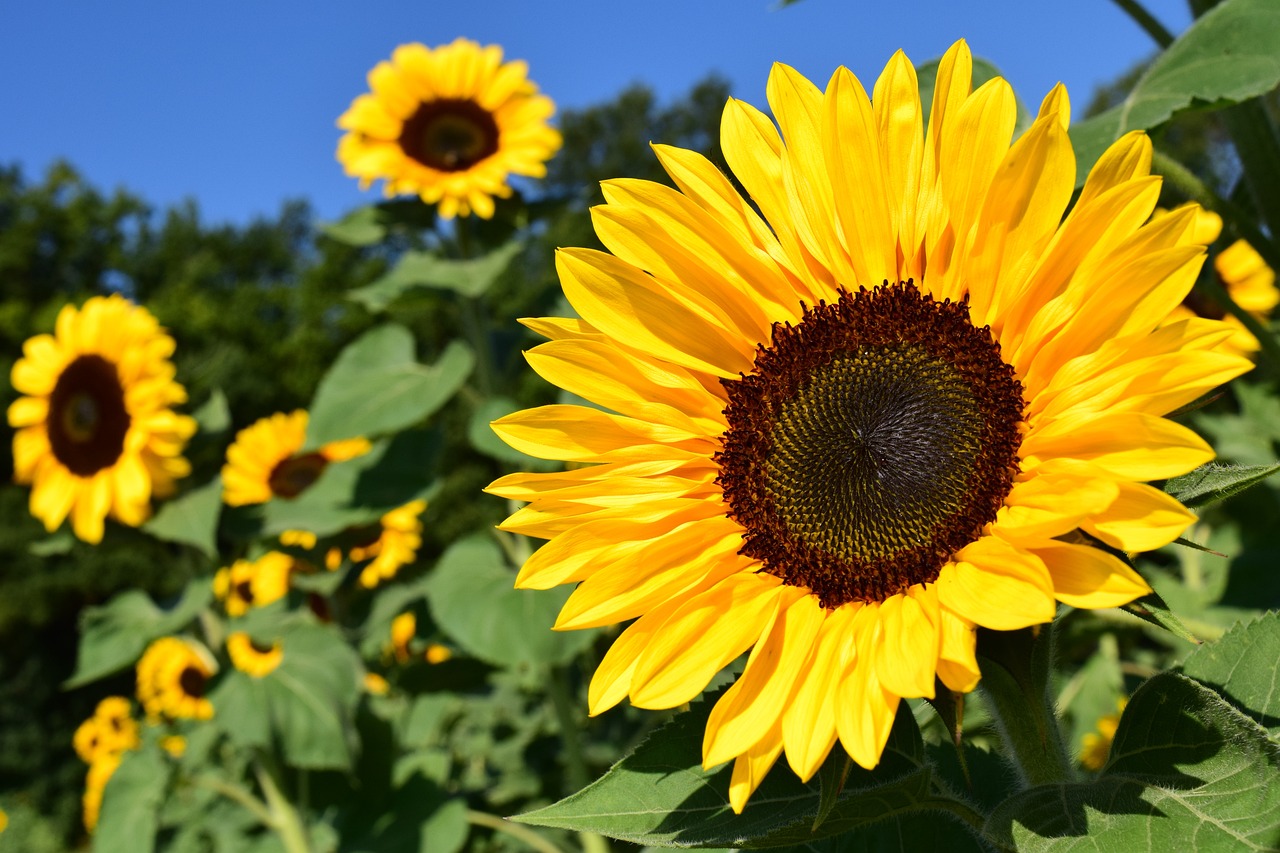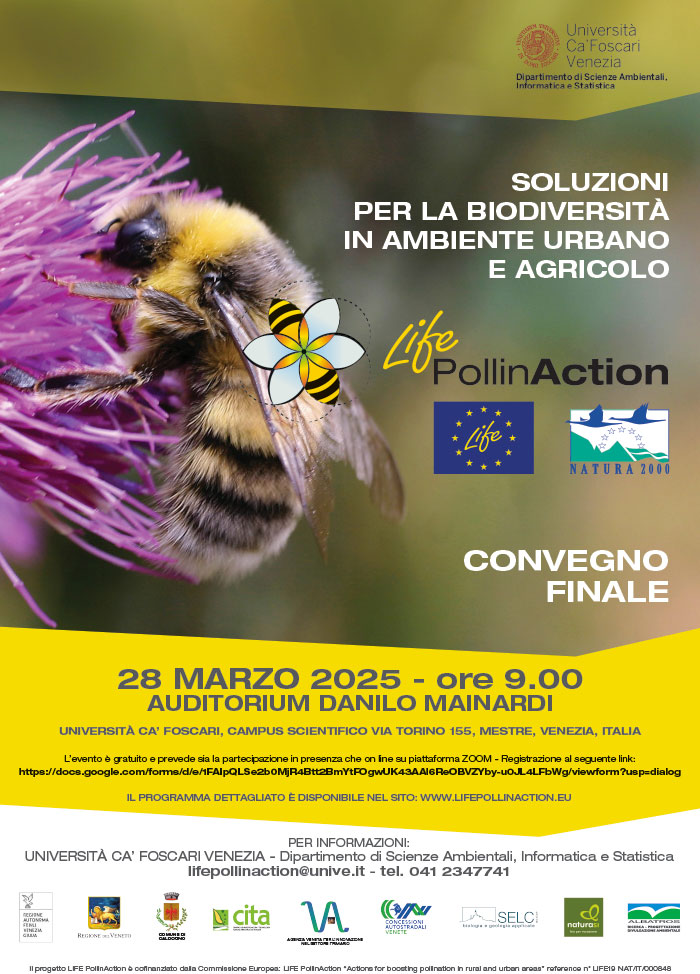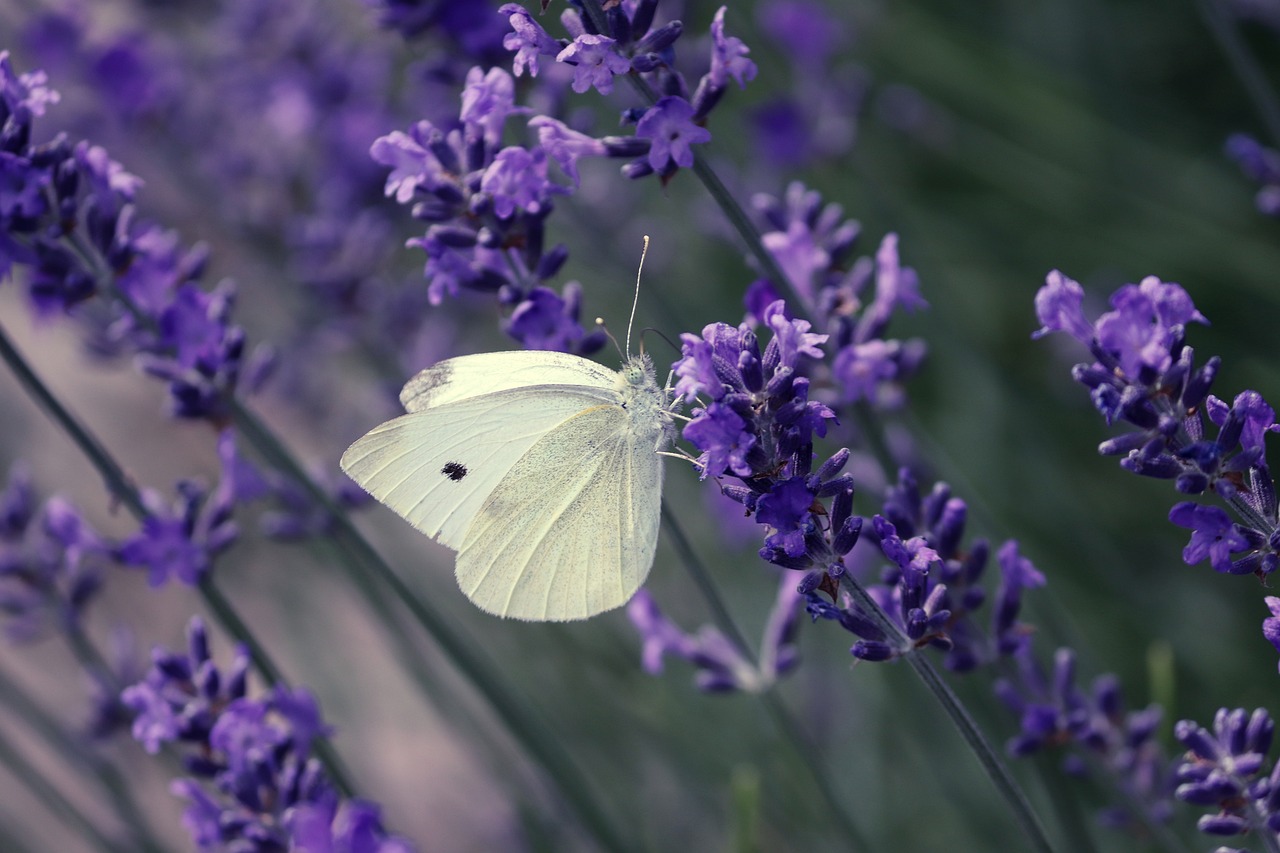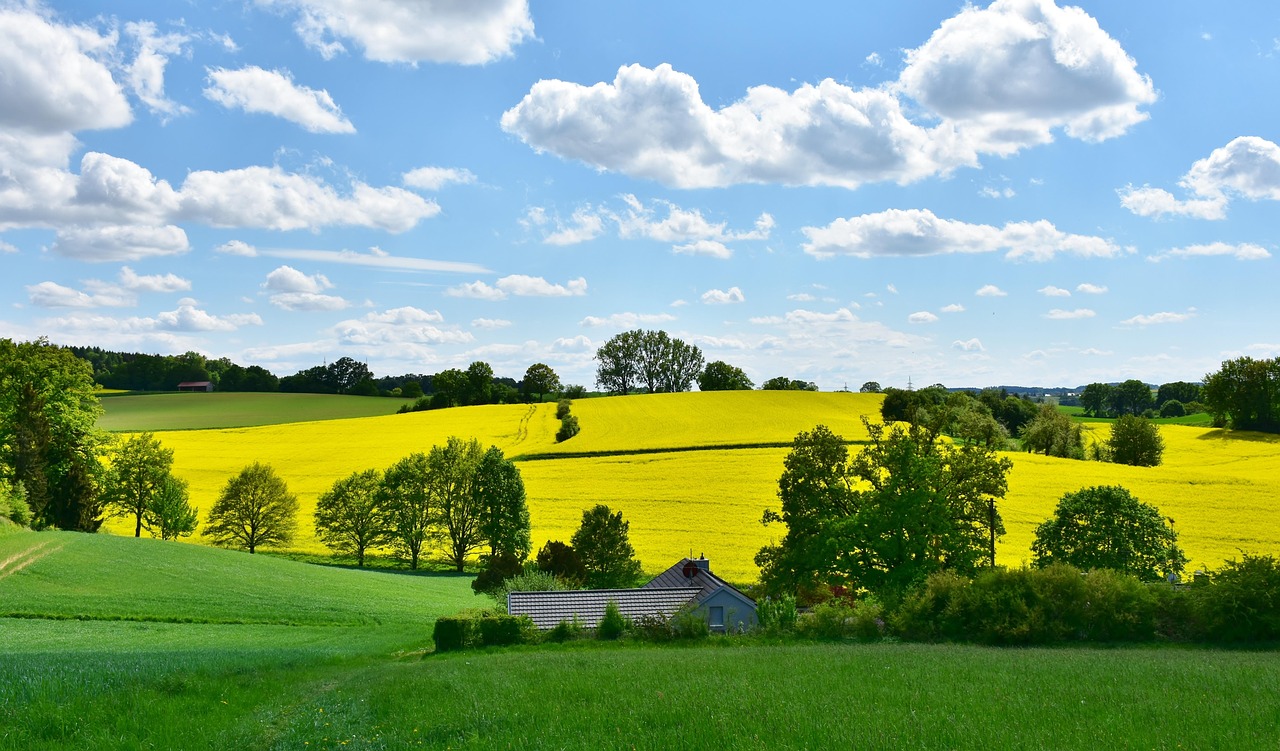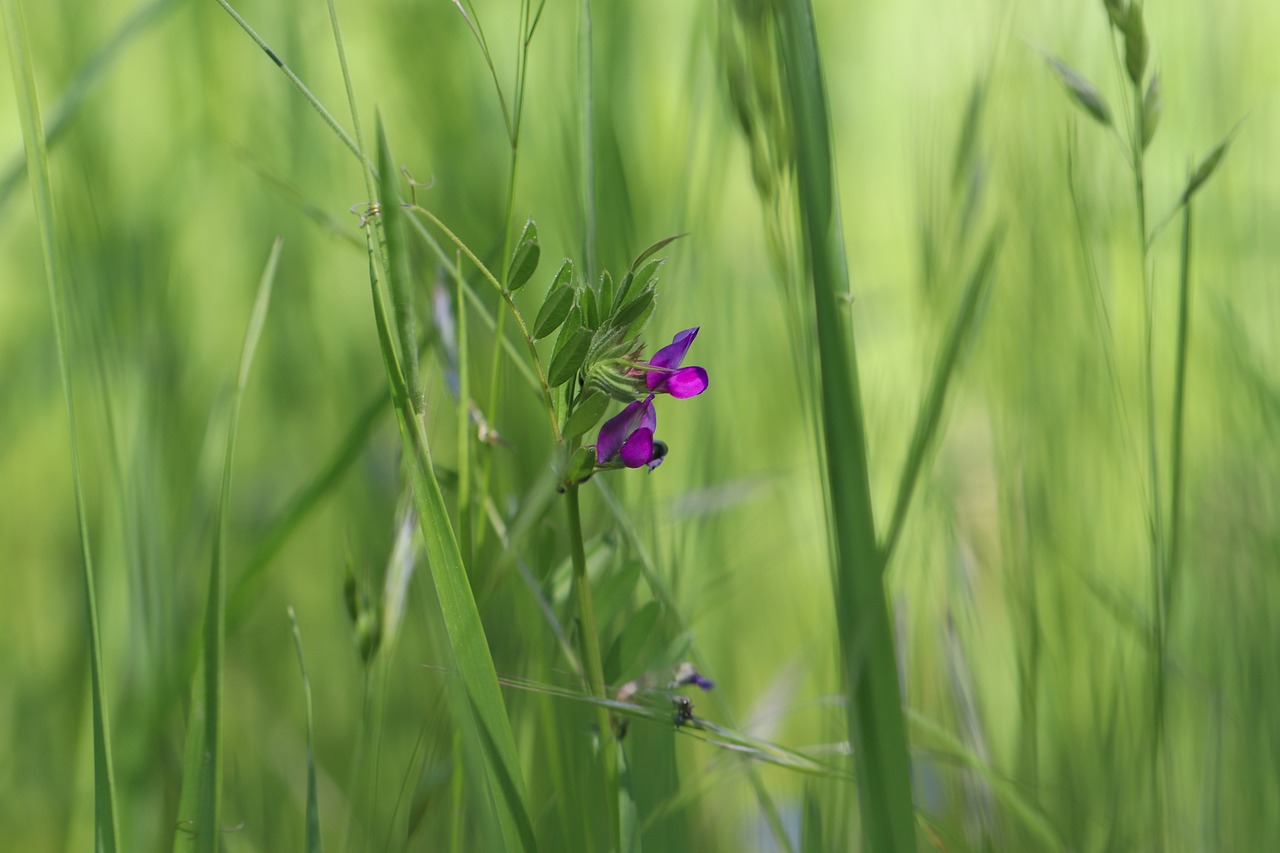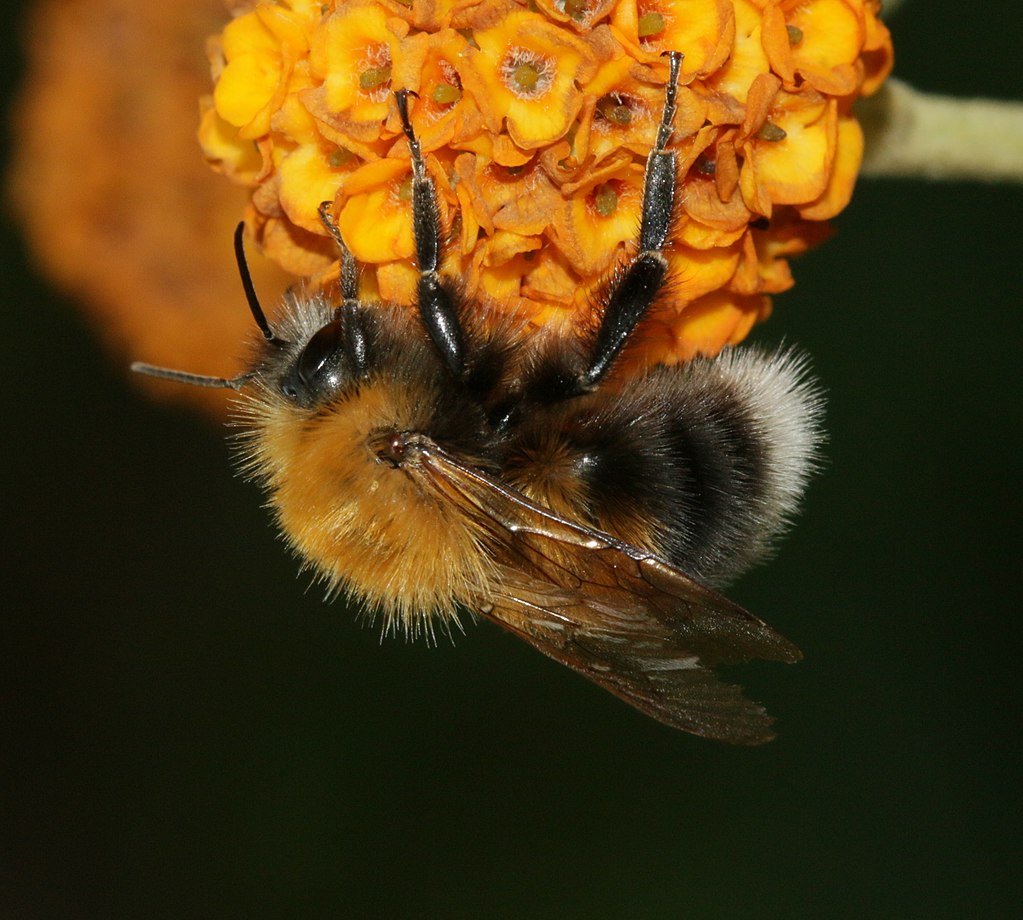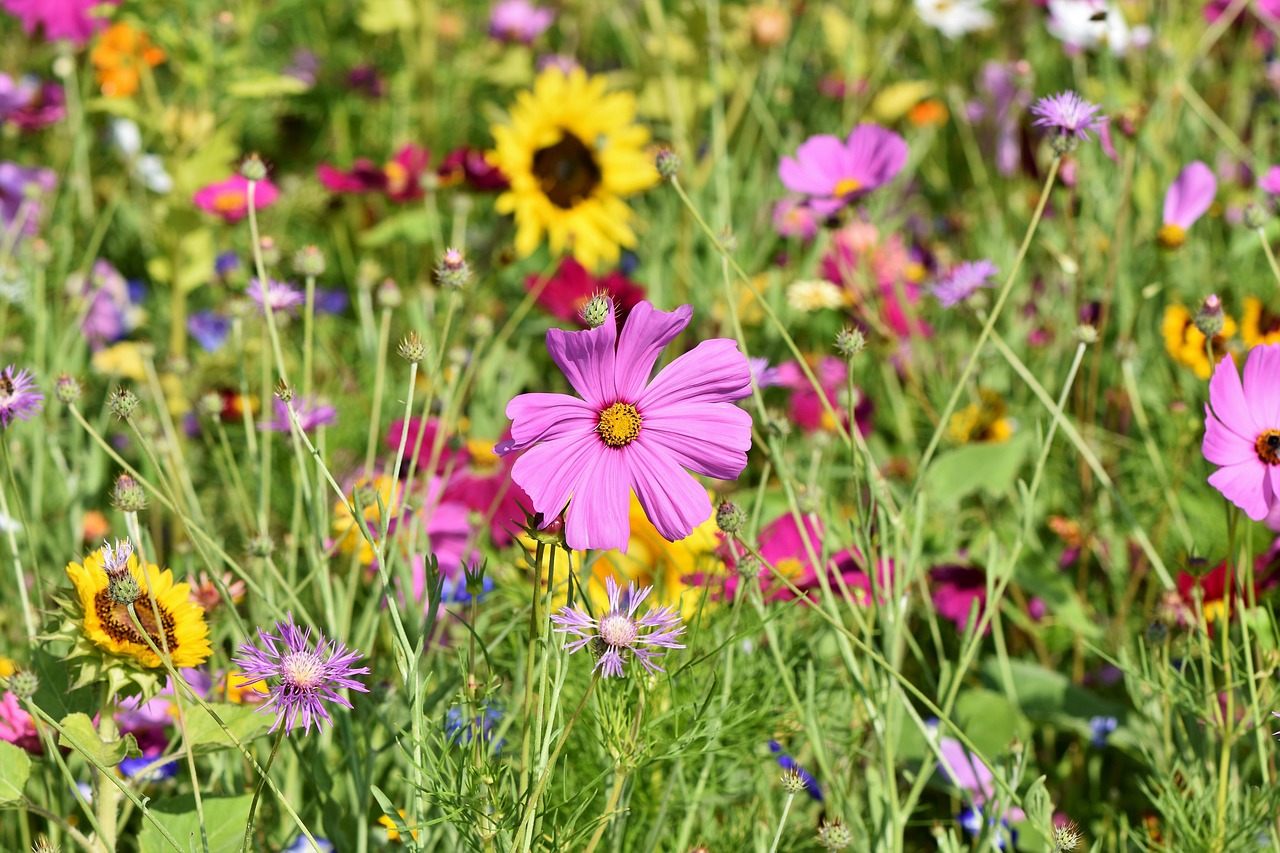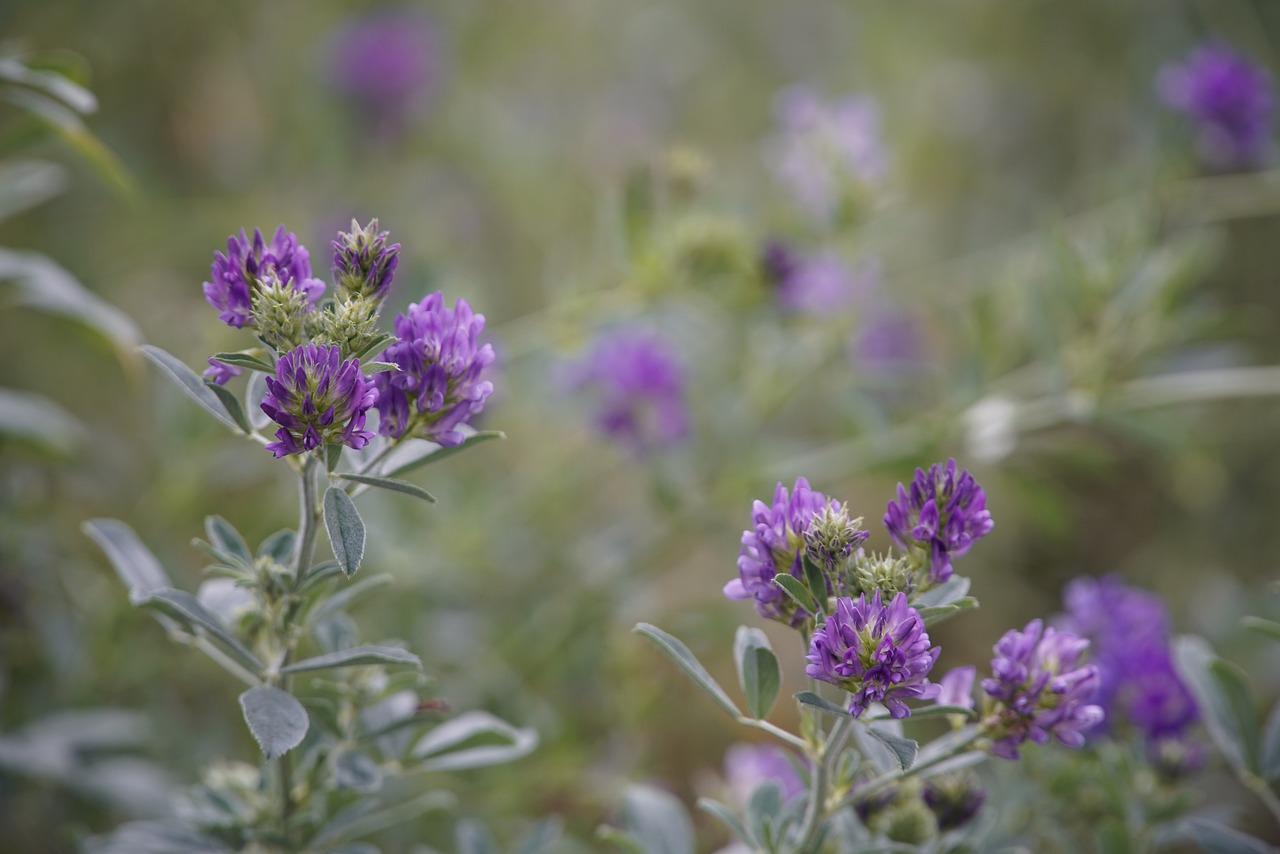Life PollinAction
THE PROJECT
In recent decades, there has been a huge reduction in pollinator populations all over the world, with consequences on agricultural production and biodiversity: over 40% of invertebrate pollinators are at risk of extinction, mostly bees and butterflies.
LIFE PollinAction aims at implementing concrete actions to protect pollinating insects and counteract the current “pollination crisis”. Both wild pollinators and honeybees provide a wide range of benefits to society ranging from food security, support for farmers and beekeepers, and social and cultural values, to the conservation of biodiversity and the stability and functioning of ecosystems.
The project, co-funded by the European Union, is coordinated by Ca’ Foscari University of Venice and implemented in collaboration with nine other partners. LIFE PollinAction is organised in several different actions aimed at creating and/or improving habitats for pollinating insects, monitoring the effectiveness of concrete actions, communicating, and disseminating the importance of protecting pollinators through the conservation and/or restoration of their habitats.
LIFE PollinAction is carried out in Italy, Veneto and Friuli-Venezia Giulia, and in Spain, in the Aragon Region.
The project started in September 2020 and will end in March 2025.
Life PollinAction
TARGETS
Although pollinator populations are affected by a range of factors, such as increasing use of agrochemicals, parasites and diseases, local and global environmental degradation and the loss of natural and semi-natural habitats currently appear to be of great importance in determining their decline. Human-driven land use changes, such as intensive agriculture and urbanization, in fact lead to the reduction of natural habitats, and with them, of the plants that support pollinators by providing food (pollen and nectar) and shelter. In such highly simplified landscapes, like urban or intensively farmed areas, the most important strategy for promoting the presence and activity of pollinators is to ensure the availability of habitats that meet their needs. Small areas where these animals can find not only feeding resources but also breeding sites, and which allow them to move safely around the territory. LIFE PollinAction therefore aims to increase the landscape heterogeneity by creating a network of multifunctional natural and semi-natural areas that together form a Green Infrastructure (GI).
By focusing on pollination interactions, the project aims at improving not only the conservation status of plant and pollinator species, but also of their long-term capability of survive and reproduce. Following the most recent scientific evidence, the conservation of pollinators (and of the function of pollination) will be addressed at the landscape scale. The holistic landscape approach will allow to combine pollinator (and pollination) conservation with a sustainable landscape planning. Concrete actions foreseen in the project will thus enhance both the function of pollination and the overall landscape connectivity, thereby also boosting the effectiveness of the Nature 2000 network.
Recover
Arable land farmland and rural and urban marginal areas by converting them into key habitats for pollinators such as species-rich meadows.
Improve
The species-poor meadows by enriching them with flowering plants.
Increase
The heterogeneity and connectivity of rural and urban landscapes.
Boost up
Landscape heterogeneity and connectivity along the road infrastructure and riverbanks.
Monitoring
Actions implemented with the aim to assess the effectiveness of concrete actions, but also to define the conservation status of ecosystems and the services they provide.
Develop
Green Infrastructure. Economic incentives in favour of pollinators. The competitiveness of farmers who support pollinators.
Life PollinAction
PARTNERS
LIFE PollinAction is an articulate project that will be implemented thanks to the coordinated work of ten partners.
ACTIONS
LIFE PollinAction is divided into a series of actions that complement each other: actions to create and/or improve habitats for pollinators, preceded by specific preparatory actions and complemented by monitoring and awareness raising and dissemination actions.
PROJECT
SITES
LIFE PollinAction is implemented in Italy, in Veneto and Friuli Venezia Giulia, and replicated in Spain, in Aragon. The Italian and Iberian landscapes have very different characteristics. While Veneto and Friuli-Venezia Giulia suffer from increased land consumption for intensive agriculture and urbanization, in Spain less productive rural areas are progressively abandoned and marginalised. Both opposing dynamics lead to a loss of landscape heterogeneity and biodiversity, resulting in changes in ecosystem processes and the provision of vital services. These include pollination, nutrient cycling, soil formation, primary production, biodiversity conservation, provision of freshwater, food and fiber, carbon sequestration, natural pest control, cultural services and many others.
